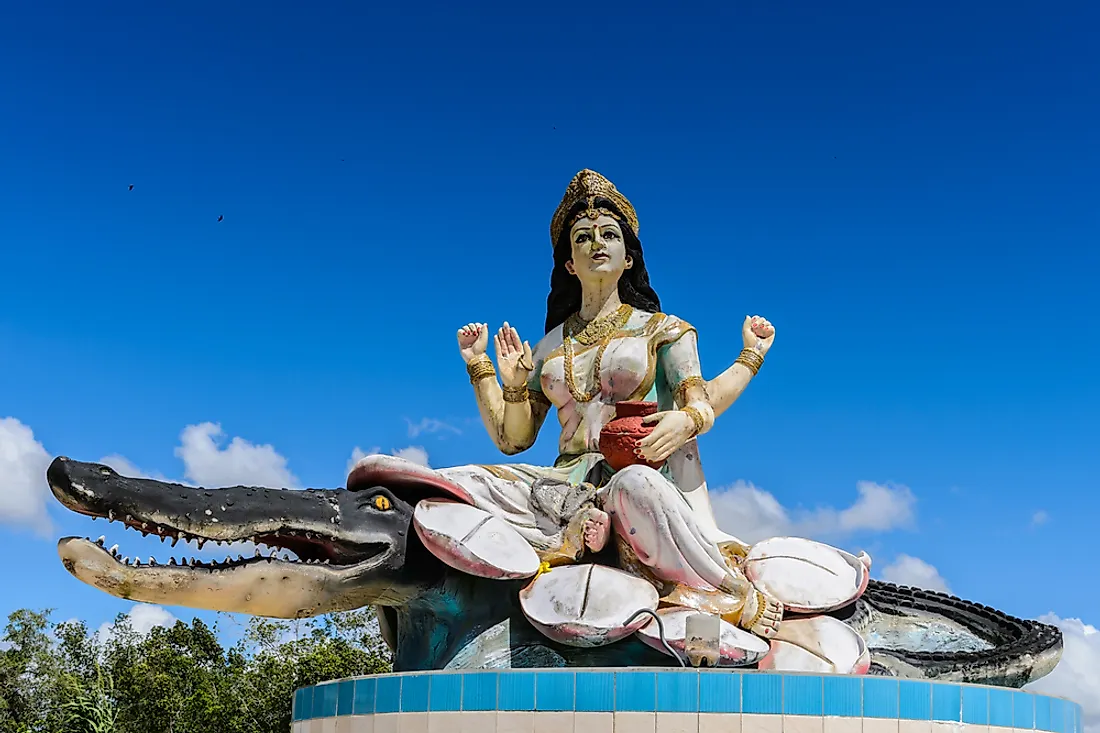The Culture Of Suriname

Located in South America’s northeastern Atlantic coast, Suriname is the continent’s smallest nation. Suriname houses a population of 597,927 individuals. The country has a highly diverse and dynamic culture that reflects influences of Asian, European, and African cultures.
6. Ethnicity, Language, And Religion
The population of Suriname has a multi-ethnic background. Hindustanis (people from northern India) comprise 27.4% of the country’s population. The Maroon people (people of African descent brought to Suriname as slaves), Creole (people of mixed African and European descent), and the Javanese account for 21.7%, 15.7%, and 13.7% of the country’s population, respectively. The native Amerindians and people of other ethnic backgrounds comprise the rest of the population.
Dutch is the official language of Suriname. English, Taki-Taki, Caribbean Hindustani, and Javanese are some of the most spoken languages in the country.
Protestant and Catholic Christians account for 23.6% and 21.6% of the population of Suriname, respectively. Hindus and Muslims represent 22.3% and 13.8% of the country’s population, respectively.
5. Cuisine
The cuisine of Suriname is influenced by African, Indonesian, Chinese, Indian, Portuguese, Amerindian, and several other cuisines. Some popular food items in the country are nasi goreng (Indonesian style fried rice served with vegetables or meat), roti (an Indian style flatbread), mie goreng (Indonesian style spiced fried noodles) pom (a native dish made from the roots of the Arrowleaf elephant ear plant), peanut soup, battered fried plantain, etc. Rice, roti, tayer, and cassava are the staple foods of the cuisine. Chicken, salted meat, and stockfish are widely consumed. Some of the most common vegetables are okra, eggplant, and Yardlong beans. The boy (a coconut and cassava cake) and fiadu (a cake made of almonds, succade, raisins, and currants).
4. Literature, Art, And Craft
Suriname has a rich tradition of oral literature. Most of the ethnic groups of the country have their distinct oral literary tradition. Folktales and legends, heroic epics, fairy tales, etc., are all part of such literature. Written literary works emerged in the country at a much later stage. The indigenous population started writing literature only in the late 18th century. Most of the written literary works in the country are in Dutch, Hindi, and Sranan.
Suriname also has a rich handicraft industry. Baskets, wood carvings, and the colorful textiles produced in the country are globally appreciated.
3. Performance Arts
Like other aspects of the Surinamese culture, the country’s music scene is as diverse as its population. The kaseko music, an Indo-Caribbean style of music, is basically fusion music that combines popular and folk music belonging to different cultures. It developed in Suriname in the 1930s. Percussion instruments like snare drums and bass drums (skratji) as well as trumpets, saxophones, and trombones are used to produce this type of music. Songs can be sung in choir or solo. Tabla, sitar, dholak, harmonium, etc., are used to play Indian music. Both filmi (Bollywood style) music and religious music are sung by the ethnic Indian community living in the country.
2. Sports
Basketball, football, and volleyball are the three most popular games played in Suriname. Although the country does not have a national soccer team, several Surinamese players have earned significant positions in European soccer clubs. In 1968, Surinamese athletes participated for the first time in the Olympic Games. The country achieved its first Olympic gold medal in the 100-meter butterfly competition during the 1988 Seoul Games. Hunting and fishing are popular recreational sports in Suriname.
1. Life In Surinamese Society
Gender roles and status in the Surinamese society varies depending on the cultures of its various ethnic communities. In some cultures, women act as the emotional and economic center of the household while in others, men dominate the family and have the final say in most matters. Marriage customs also vary widely in the country. In Hindostani families, arranged marriage is more common. Lavish weddings are the norm. In Caribbean families, women-headed families are not uncommon. Many women have children from multiple partners and often practice serial monogamy while many men also have relationships with more than one woman.
The size of the household varies greatly in the country ranging from small, nuclear families to large households with several generations living together under the same roof. Children are brought up according to the cultures of the ethnic communities to which they belong. Education is considered exceedingly important by all population groups living in Suriname. Some groups, especially the Amerindians and the Maroons have rites of passage. Initiation ceremonies are held to welcome an individual into adulthood. For example, the Wayana boys are exposed to stinging wasps and they must withstand the stings without a whimper to exhibit their courage and strength.
The Surinamese are generally calm and relaxed. They are known to be excellent hosts. Most houses in the country lack a bell or knocker. Guests are required to take off their shores when going inside the house. Meals are offered to them. Handshakes and hugs are common forms of greeting. Children are taught to respect elders since an early age.











